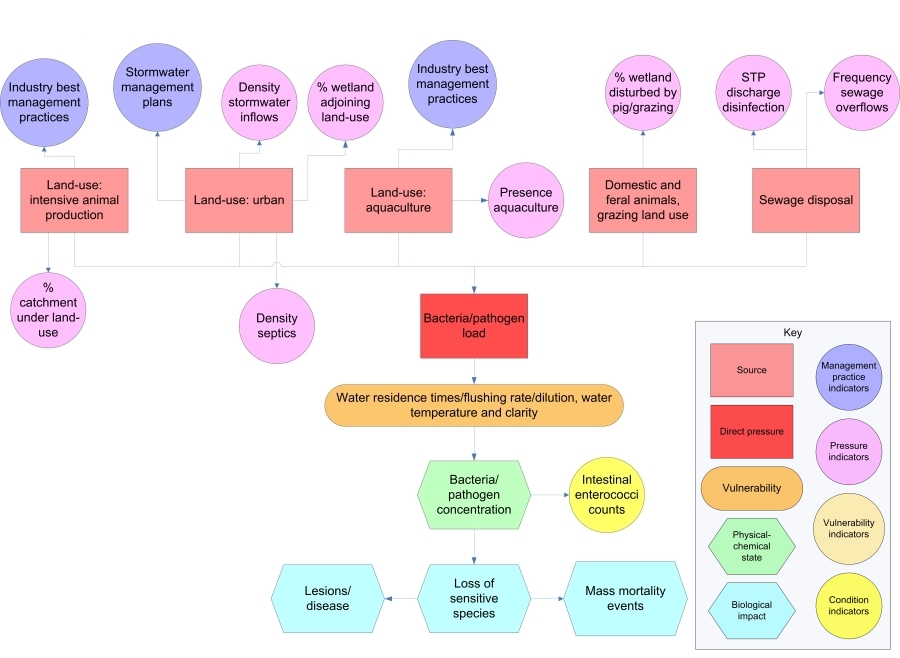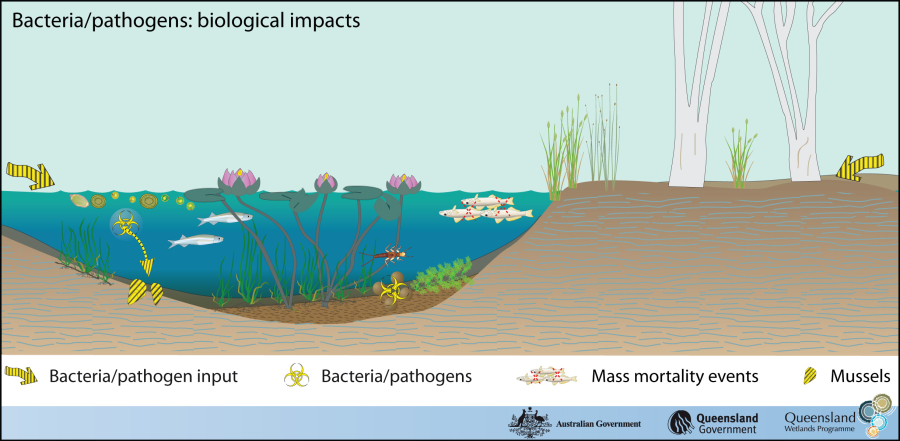|
|
Bacteria/pathogens – StateBacteria/pathogens – StateFlow chart showing the major elements associated with bacteria and pathogen management
Click on elements of the flow chart or select from the tabs below
Bacteria/pathogens entering a wetland may result in a loss of sensitive species. Mammalian derived bacteria (e.g. from humans, pigs and cattle) are thought to have little if any impact on non-mammalian wetland fauna such as fish and macroinvertebrates, however, mammalian bacteria are known to be assimilated by mussels but are usually broken down in fish guts. Humans can be exposed to bacteria/pathogens directly through recreational activities or through the consumption of contaminated fauna such as mussels. Pathogens can result in mass mortality events of susceptible species.
Last updated: 22 March 2013 This page should be cited as: Department of Environment, Science and Innovation, Queensland (2013) Bacteria/pathogens – State, WetlandInfo website, accessed 8 May 2025. Available at: https://wetlandinfo.des.qld.gov.au/wetlands/management/pressures/lacustrine-palustrine-threats/bacteria-pathogens/state.html |

 — Department of the Environment, Tourism, Science and Innovation
— Department of the Environment, Tourism, Science and Innovation



